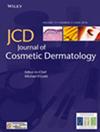Pigmented Skin Disorders in High-Altitude: Cross-Sectional Epidemiological Analysis in the General Population of Lhasa, China
Abstract
Background
Previous studies showed the prevalence of melasma, plateau facial telangiectasia, and vitiligo varied in different regions but were absent in high-altitude areas.
Aims
To investigate the prevalence of three common pigmented skin disorders (melasma, plateau facial telangiectasia, and vitiligo) among the general population in Lhasa, aiming to provide a scientific basis for their prevention and management in high-altitude areas.
Methods
From May 2021 to October 2021, multistage stratified cluster random sampling was conducted in Lhasa to carry out a questionnaire and a second on-site physical examination, and the results were statistically analyzed.
Results
The study included 4988 participants, revealing a prevalence of 14.94% for melasma, 17.14% for plateau facial telangiectasia, and 0.38% for vitiligo. Notably, the prevalence of melasma and plateau facial telangiectasia were significantly higher among women, particularly those aged 31–50 years, compared to men. Urban residents also showed a higher prevalence than their rural counterparts.
Conclusions
Our study concludes that the prevalence of the three pigmented skin disorders in Lhasa is notably higher than in lower-altitude areas, with UV radiation being a significant risk factor. Our findings underscore the need for enhanced public health interventions, including screening, education, and prevention efforts, to mitigate the impact of these skin disorders in high-altitude regions. Our research contributes valuable insights toward the understanding and management of pigmented skin disorders in such unique environments. It may also provide an easy-to-use epidemiological survey method for socioeconomically underdeveloped areas.


 求助内容:
求助内容: 应助结果提醒方式:
应助结果提醒方式:


